If you’ve ever been captivated by the flavors of Japanese cuisine—savory broths, delicate rice dishes, and crisp tempura—you’re not alone. The good news? You don’t need to book a flight to Tokyo to bring those comforting, bold, and umami-packed flavors into your home. Whether you’re new to Japanese cooking or looking to add a few more favorites to your weekly rotation, this guide offers 30 easy Japanese recipes you can start making today.
From classic miso soup to vibrant matcha desserts, you’ll find something here to love. These recipes are approachable, use common pantry ingredients, and require minimal effort. They’re perfect for weeknight dinners, family gatherings, or even meal prep. So grab your apron—your Japanese culinary journey begins now.
Japanese Pantry Staples
Before we dive into the recipes, let’s look at the essential ingredients that define Japanese cooking. Having these on hand will make whipping up these recipes easy and authentic.
Must-Have Ingredients in Every Japanese Kitchen
Building a Japanese-inspired pantry starts with a few key items that form the base of most dishes:
- Soy sauce: Salty and savory, it’s essential for sauces, marinades, and seasoning.
- Miso paste: This fermented soybean paste adds depth to soups and dressings.
- Mirin: A sweet rice wine used for glazes and sauces like teriyaki.
- Dashi granules or kombu/bonito flakes: The building block of most soups and broths.
- Rice vinegar: Used in dressings, pickles, and sushi rice.
- Sesame oil: Nutty and fragrant, used sparingly for finishing dishes.
- Sake: Japanese rice wine that adds umami and balance to cooked dishes.
- Panko breadcrumbs: Lighter and crispier than regular breadcrumbs, ideal for frying.
These ingredients are widely available at most grocery stores or online and will make your kitchen ready for a variety of dishes—from homemade sushi to donburi bowls.
Tools for Cooking Japanese Cuisine
Japanese cooking doesn’t require fancy equipment. In fact, many of the dishes can be made with what you already have. Here are a few tools that might help:
- Rice cooker or Instant Pot: Makes perfect short-grain rice.
- Donabe (clay pot) or heavy-bottomed pot: Great for soups and stews like shabu shabu.
- Mandoline slicer or sharp knife: Ideal for prepping veggies thinly for salads and pickles.
- Tamagoyaki pan (optional): If you want to make traditional Japanese omelets.
- Chopsticks or kitchen tongs: Helpful for flipping delicate items like tempura.
Quick Japanese Dishes
Not every recipe requires hours in the kitchen. These quick Japanese dishes can be prepped, cooked, and served in under 30 minutes—perfect for busy weeknights or lazy Sundays. Plus, they offer incredible flavor and comfort with minimal effort. If you’re curious about the cultural roots of these classics, you can explore more about Japanese cuisine and how everyday dishes are woven into daily life.
Miso Soup
No Japanese meal feels complete without a warm bowl of miso soup. It’s light, soothing, and packed with umami.
To make it at home, start with dashi broth, which you can make using kombu (seaweed) and bonito flakes or use instant dashi powder. Add miso paste (white or red depending on your taste), and stir gently until it dissolves—never boil miso directly, as it ruins the flavor and beneficial enzymes. Add silken tofu, sliced scallions, and wakame seaweed for texture.
Miso soup pairs beautifully with rice or grilled fish, but it’s just as satisfying on its own. Make a large batch and enjoy it over a few days—it only gets better.
Tamagoyaki (Japanese Rolled Omelet)
Tamagoyaki is a sweet and savory rolled omelet often found in bento boxes and sushi assortments. It might look fancy, but it’s simple to make once you get the rolling motion down.
You’ll need eggs, a splash of soy sauce, mirin, and a pinch of sugar. Beat everything together and pour thin layers into a rectangular pan (or use a nonstick round skillet). Roll each layer before adding the next until you have a beautiful layered omelet.
Slice into thick pieces and enjoy it with steamed rice or a light salad. Tamagoyaki makes a great breakfast, snack, or lunchbox star.
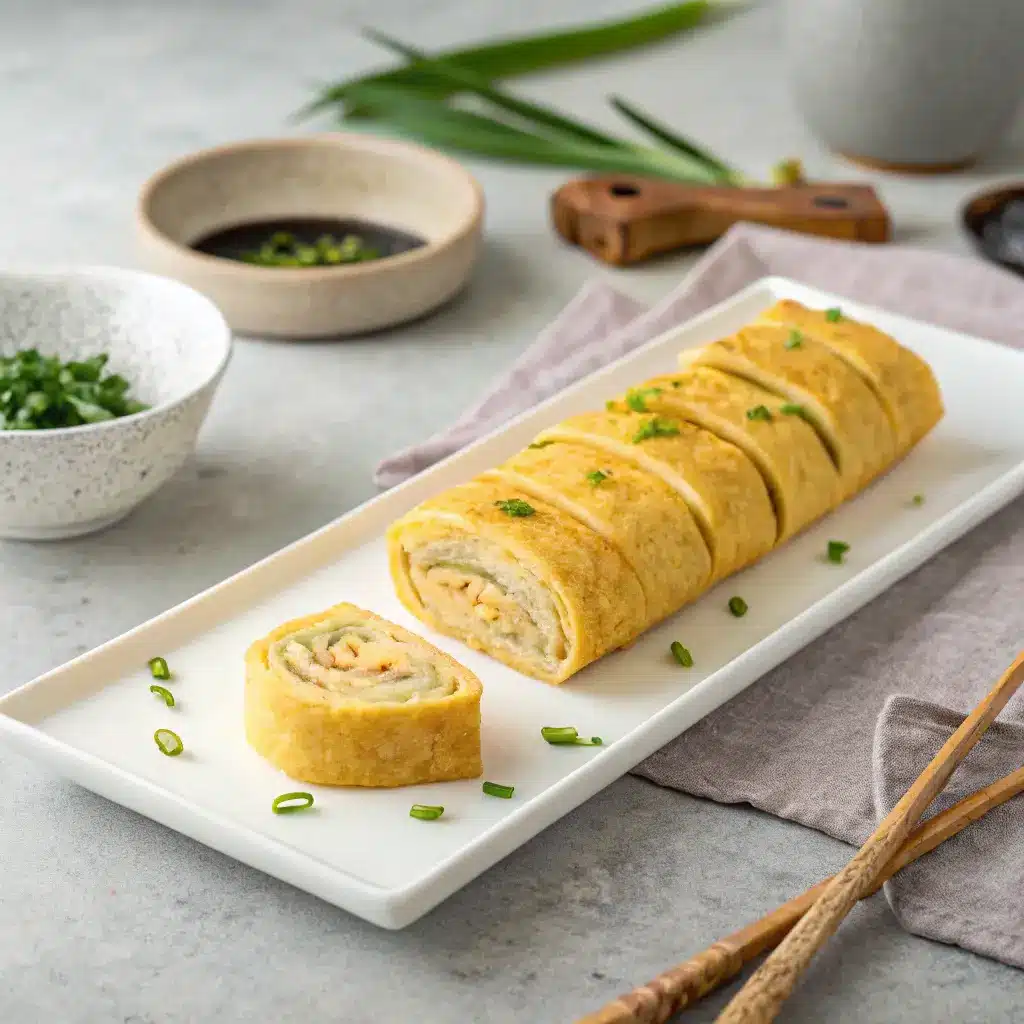
Goma-ae (Spinach Sesame Salad)
Goma-ae is one of those dishes that surprises people. It’s just spinach, but the sesame dressing takes it to a whole new level.
Blanch spinach quickly, then squeeze out excess water. Mix toasted sesame seeds, soy sauce, sugar, and a bit of mirin or dashi to create a nutty, sweet-savory dressing. Toss with spinach and serve chilled.
This salad is easy, healthy, and works well as a side dish for teriyaki chicken or grilled salmon. Once you try it, you’ll want to put sesame dressing on everything.
You might also enjoy this light and flavorful lemon ginger spinach smoothie for a refreshing pairing option.

Rice and Donburi Recipes
Rice is the heart of Japanese cooking. Whether it’s molded into handheld snacks or served under layers of savory toppings, rice dishes provide both nourishment and comfort. Donburi—meaning “rice bowl”—is a fast and filling meal that layers protein and sauce over warm steamed rice. Let’s dig into a few favorites.
Onigiri Rice Balls
Onigiri, or Japanese rice balls, are a go-to snack or lunch item for millions. They’re portable, customizable, and satisfyingly simple.
Start with Japanese short-grain rice (cooked and slightly cooled). Wet your hands lightly with water and a pinch of salt, then shape the rice into a triangle or round ball. Fill the center with tuna mayo, umeboshi (pickled plum), or grilled salmon for extra flavor. Wrap a strip of nori around the bottom to make it easy to hold.
These are ideal for bento boxes, quick lunches, or even road trips. Once you master the shape, you can start getting creative with fillings and seasonings.
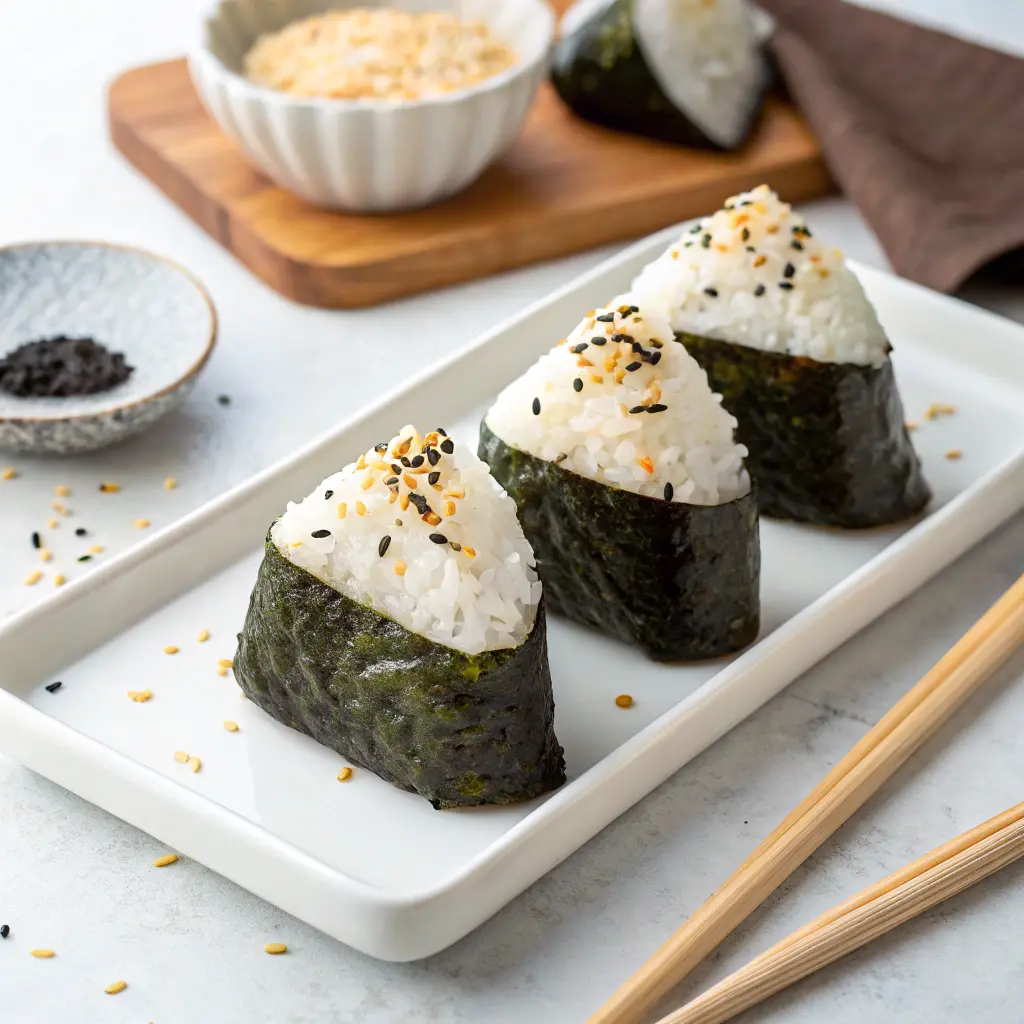
Chicken Teriyaki Donburi
This chicken teriyaki donburi is pure comfort in a bowl. Sweet and salty teriyaki-glazed chicken, laid over fluffy white rice, with steamed broccoli or shredded cabbage—it’s a quick dinner that checks every box.
For the sauce, combine soy sauce, mirin, sake, and sugar in a small pan and let it reduce. Pan-sear or grill boneless chicken thighs, then glaze them with the sauce until caramelized and glossy.
Slice and serve over a warm bowl of rice, spooning extra teriyaki sauce on top. Add sesame seeds and green onions for freshness and crunch.
You can also pair it with this refreshing pink salt mocktail recipe for a light finish.
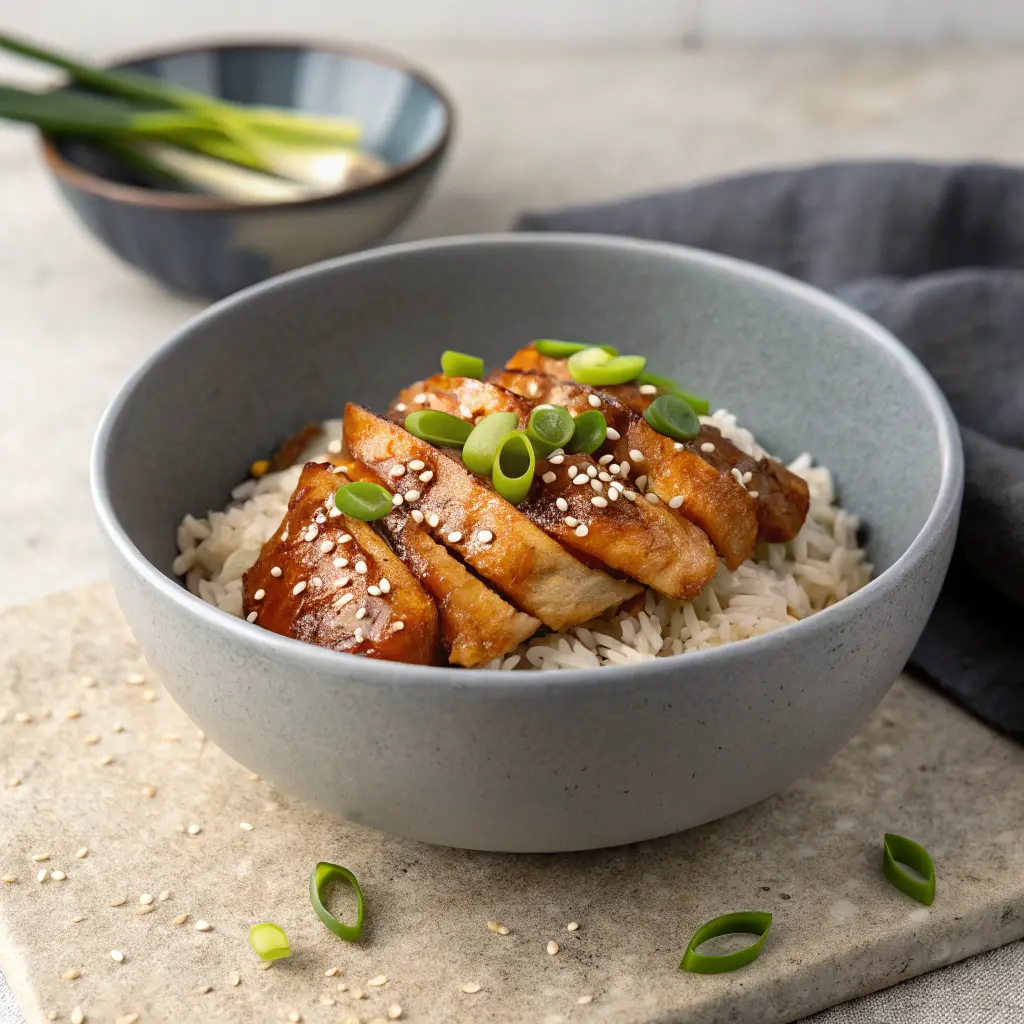
Gyudon (Beef Bowl)
Gyudon is one of Japan’s most beloved fast meals. It combines thin slices of beef simmered in a sweet-savory onion broth, all served over steaming rice.
Start by simmering sliced onions in a mixture of dashi, soy sauce, mirin, and sugar. Add paper-thin beef (like ribeye or chuck) and cook just until tender. The broth absorbs into the rice, creating layers of flavor.
Top with pickled ginger, green onions, or a soft-boiled egg for extra richness. It’s comfort food that’s ready in 20 minutes—and tastes like it took hours.
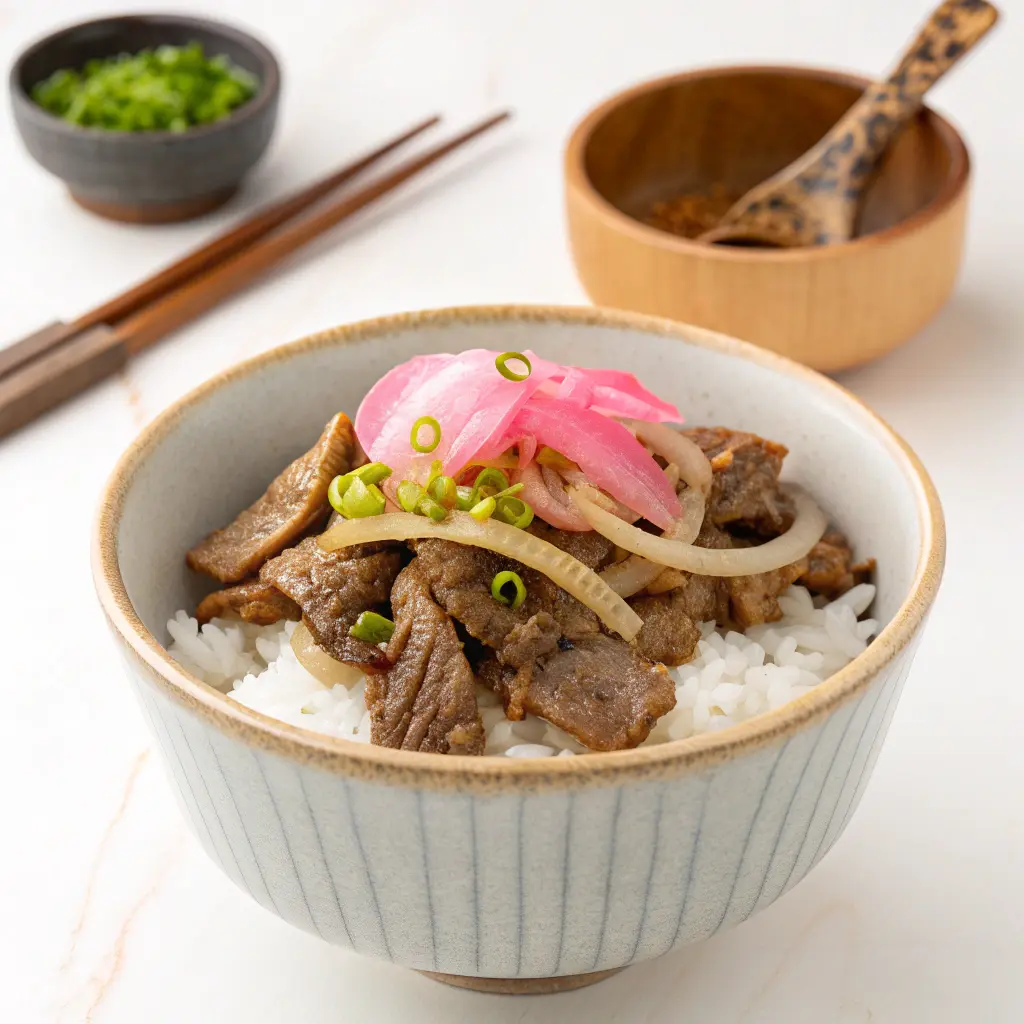
Noodles Galore
Noodles are a cornerstone of Japanese cuisine. They’re quick to prepare, endlessly versatile, and satisfying in every season. Whether you love the chewy bite of udon or crave a slurp-worthy bowl of ramen, there’s a Japanese noodle dish for everyone.
Udon Noodles
Udon noodles are thick, chewy, and made from wheat flour. They’re typically served in a hot broth made with dashi, soy sauce, and mirin. This base is light but packed with umami.
For a classic bowl, cook the udon noodles according to package instructions and rinse briefly in warm water to separate. In a pot, combine dashi broth, soy sauce, and mirin. Once hot, add cooked noodles and top with green onions, tempura flakes, or kamaboko (fish cake). For a cold-weather twist, try it with a poached egg and shiitake mushrooms.
You can find similar comfort in warm brothy dishes like this chicken soup for inflammation, which uses soothing ingredients.
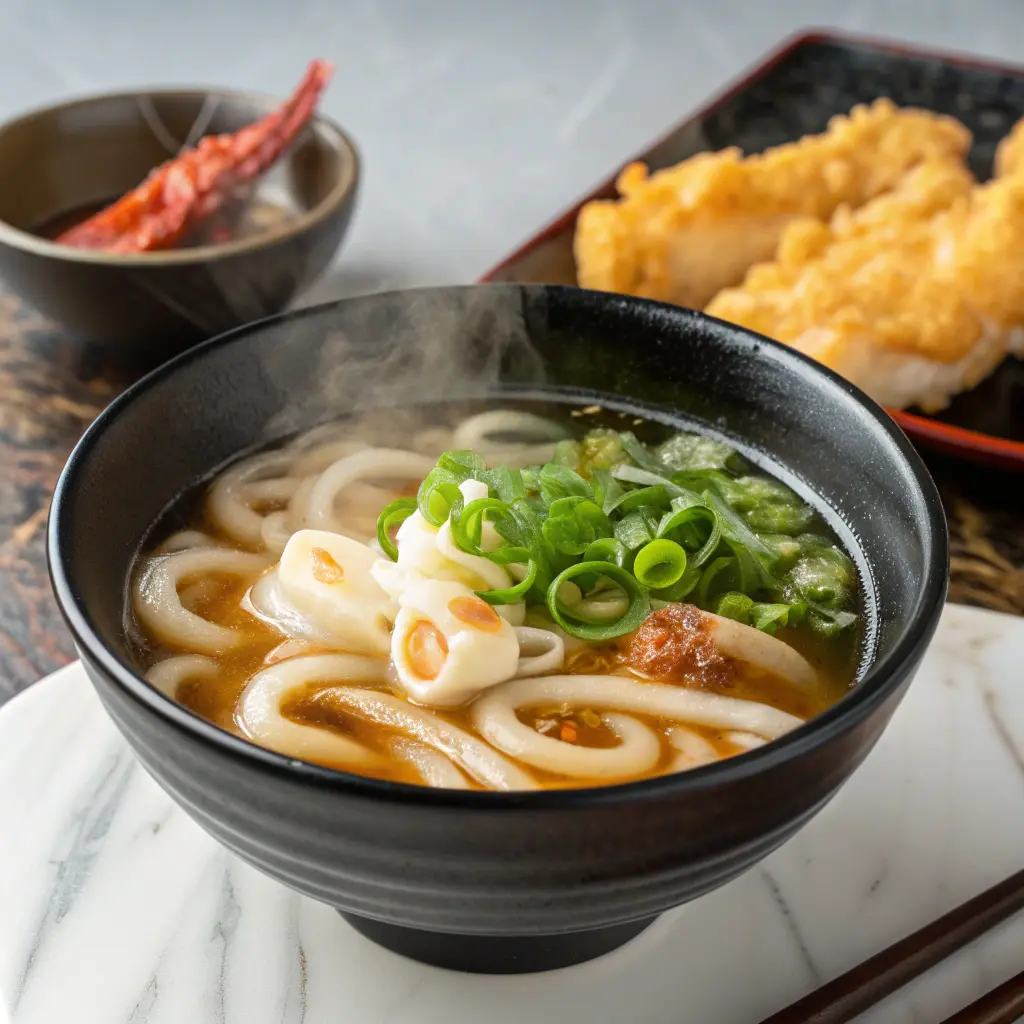
Soba Noodle Salad
Soba noodles are made from buckwheat, giving them a slightly nutty flavor and a beautiful texture—perfect for chilled dishes.
To make a refreshing soba salad, boil the noodles, rinse under cold water, and drain. Toss with a light soy-based dressing (soy sauce, rice vinegar, sesame oil, and a dash of sugar). Add shredded carrots, cucumber, edamame, and sliced scallions.
Top with toasted sesame seeds and nori strips for crunch. It’s healthy, vegan-friendly, and comes together in less than 15 minutes.
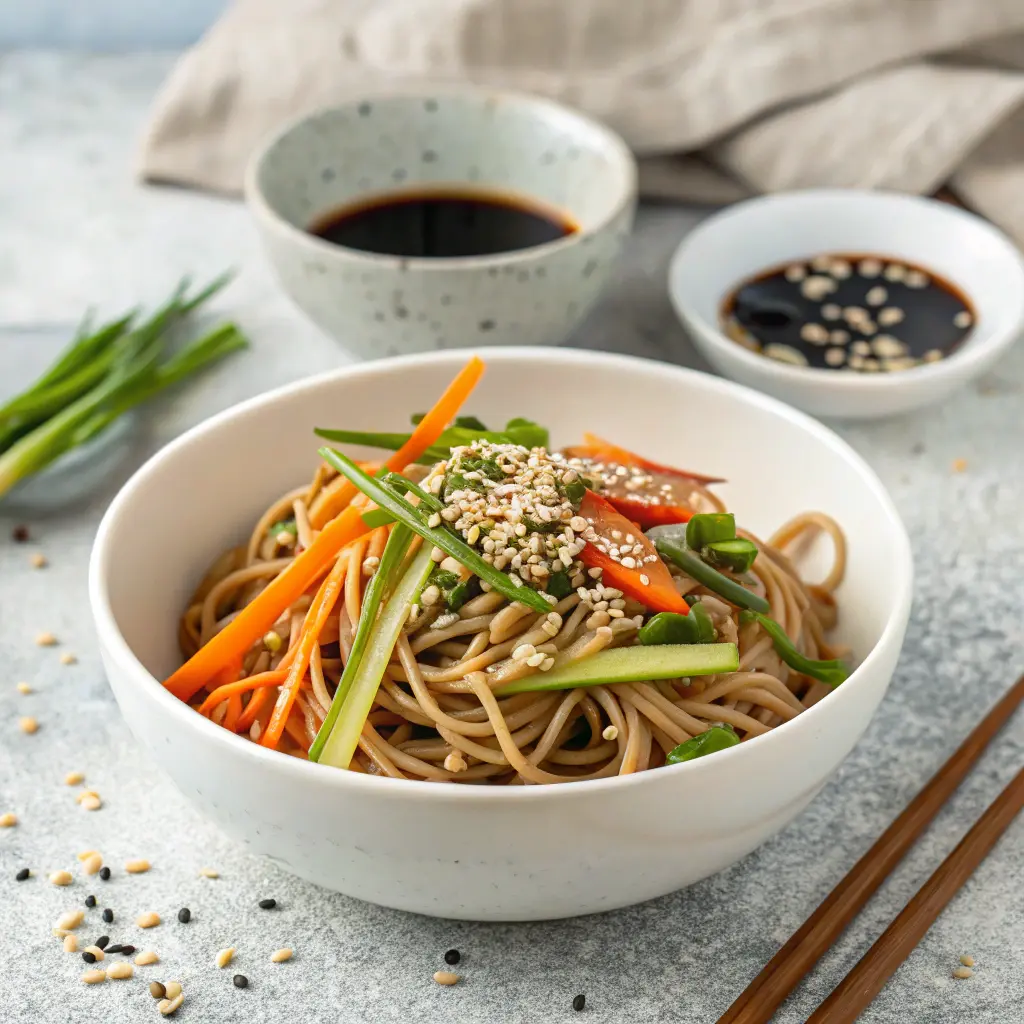
Ramen Recipes
There’s nothing quite like a bowl of ramen. From rich tonkotsu broths to simple soy sauce–based ones, ramen is a full meal in one bowl.
For a basic homemade ramen, use chicken or vegetable broth as your base. Add garlic, ginger, soy sauce, and a touch of miso paste. Let it simmer and then add your cooked noodles. Top with sliced boiled eggs, corn, mushrooms, and nori.
Looking for something more exciting? Try spicy miso ramen with chili oil or a chicken katsu ramen for extra crunch. With toppings ranging from crispy onions to marinated bamboo shoots, the possibilities are endless.
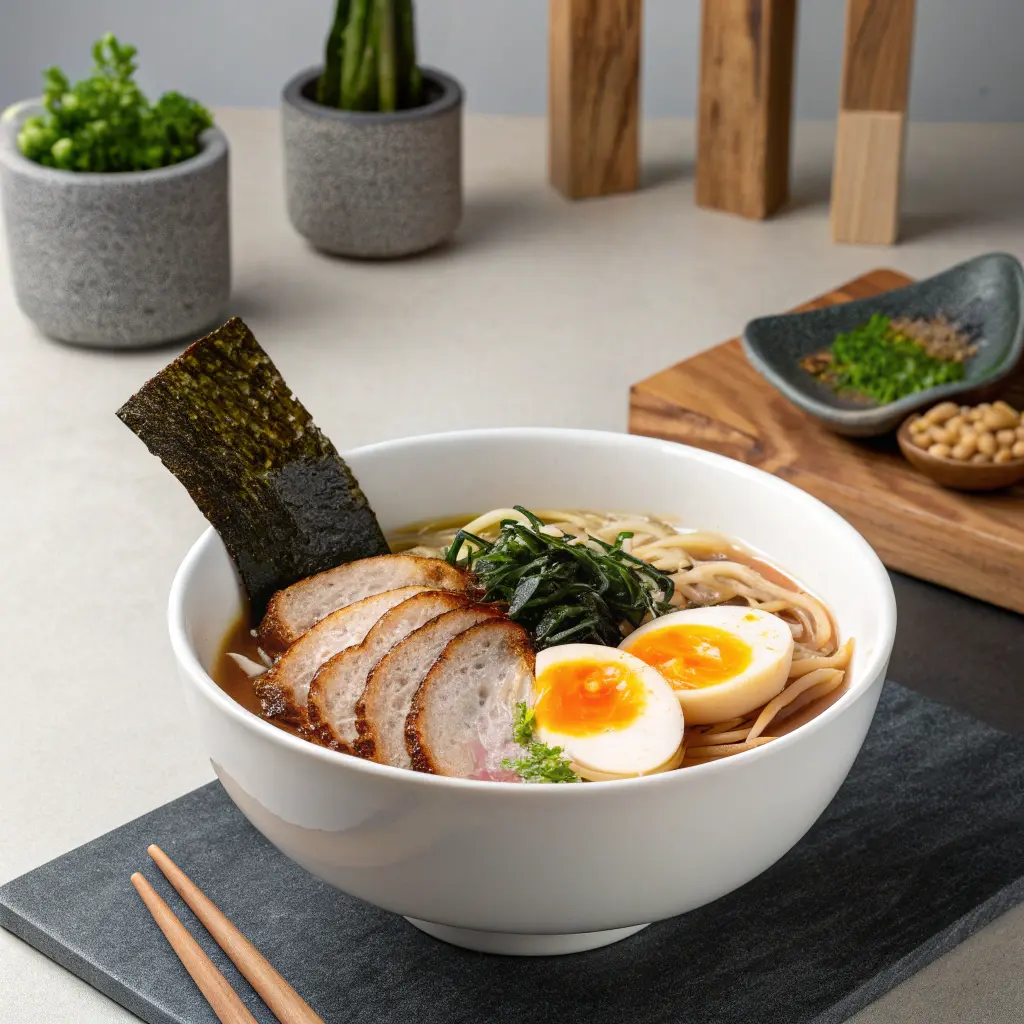
Japanese Street Food Favorites
Japanese street food captures the heart of local flavors in a fun, casual way. Whether you’ve strolled through a Tokyo night market or just want to recreate those flavors at home, these recipes are easier than you think.
Yakitori Skewers
Yakitori are grilled chicken skewers glazed in a sweet-savory tare sauce. Each skewer can include different cuts: thighs, breasts, skin, even liver. It’s a favorite among izakaya (Japanese pubs) and backyard grills.
To make it, cut chicken into bite-sized pieces and thread onto soaked bamboo skewers. Grill over medium heat, brushing with a sauce made of soy sauce, mirin, sake, and sugar. Turn occasionally until the chicken is glossy and slightly charred.
Pair it with a light salad or steamed rice. It’s a simple yet flavorful option that can double as a snack or main dish.
You might also enjoy something cozy and savory like this lemon ginger chicken that has a similar sweet-tangy balance.
Tempura Batter
Tempura is Japan’s take on light, airy deep-fried perfection. It’s often made with shrimp, sweet potato, zucchini, or mushrooms, all coated in a crispy shell.
The secret is in the batter. Use cold water, flour, and a little egg—but don’t overmix. A few lumps are fine. This keeps it from becoming doughy or heavy. Dip your ingredients just before frying in hot oil around 340–360°F.
The result should be golden and crisp, with a delicate crunch. Serve tempura with a dipping sauce made from soy sauce, dashi, and grated daikon for an authentic experience.
Takoyaki (Octopus Balls)
Takoyaki are golden spheres filled with diced octopus, pickled ginger, and scallions—cooked in a special griddle pan. While it sounds complex, it’s easy with the right tools.
Mix a runny batter using flour, dashi, eggs, and baking powder. Pour into a takoyaki pan, drop in your fillings, and turn as they cook to form round shapes.
Top with takoyaki sauce, Japanese mayo, aonori (seaweed flakes), and bonito flakes. The outside stays crisp, while the inside is molten and savory. Even if you skip the octopus, you can sub in cheese or tofu for an equally delightful bite.
Satisfying Soups and Stews
Japanese soups and stews are more than comfort food—they’re a warm hug in a bowl. Whether you’re simmering a rich curry or preparing a light, umami-packed broth, these dishes come together quickly with big flavor payoff.
Shabu Shabu
Shabu shabu is a DIY hot pot experience, popular in homes and restaurants across Japan. It’s a fun, interactive meal where thinly sliced meat and vegetables are swirled in simmering broth, then dipped into flavorful sauces.
Start with a simple kombu dashi (kelp broth). Add napa cabbage, enoki mushrooms, carrots, tofu, and thinly sliced beef or pork. Cook just until the meat changes color—this happens fast!
Pair with ponzu (citrus soy sauce) or sesame dipping sauce. It’s a healthy, protein-rich meal that’s surprisingly easy for weeknights or gatherings. Leftover broth? Use it the next day for soup noodles.
If you’re craving another light comfort meal, try this chicken soup with anti-inflammatory herbs from our collection.
Japanese Curry
Japanese curry is thick, mildly spicy, and slightly sweet, made with simple ingredients you likely have on hand. It’s a go-to comfort food in Japan and is often served over rice with crispy katsu on the side.
Use boxed curry roux cubes or make your own with curry powder, flour, and butter. Saute onions, carrots, and potatoes, then add meat—chicken, pork, or beef. Simmer until tender, stir in your curry base, and cook until thickened.
Serve over hot white rice and top with pickled radish or a soft-boiled egg. It’s deeply satisfying and even better the next day.
Dashi Broth
Dashi is the backbone of Japanese cooking. It’s used in miso soup, noodle broths, and more. Despite its importance, it’s incredibly easy to make.
Traditional dashi uses kombu (dried kelp) and katsuobushi (bonito flakes). Soak the kombu in water, heat gently, then add bonito flakes and steep. Strain and use immediately or refrigerate.
The result is a clear, umami-rich broth that elevates anything it touches—from miso soup to simmered vegetables.
Desserts to Savor
No Japanese meal feels complete without a little sweetness at the end. From earthy matcha flavors to chewy rice-based treats, Japanese desserts are simple to prepare and beautifully balanced—not overly sugary, but rich in texture and tradition.
Matcha Desserts
Matcha desserts are a favorite among Japanese sweets lovers, thanks to their earthy bitterness and vibrant green color. Whether you make matcha cookies, cakes, or panna cotta, you only need a small amount of ceremonial or culinary-grade matcha powder to bring bold flavor.
One of the easiest options? A no-bake matcha cheesecake. Combine cream cheese, sugar, whipped cream, and matcha powder. Pour over a graham cracker crust and chill overnight. The result is creamy, dreamy, and lightly bitter in the best way.
You can also try matcha mochi or a fluffy matcha Swiss roll for variety. If you love tea-based treats, don’t miss our lemon ginger spinach smoothie for a refreshing afternoon pick-me-up.
Dorayaki (Red Bean Pancakes)
Dorayaki is a classic Japanese treat made of two soft, sweet pancakes filled with anko, a smooth red bean paste. These fluffy cakes are made with eggs, sugar, honey, and flour. They’re lightly cooked on a griddle until golden brown, then sandwiched with filling.
You can buy red bean paste pre-made, or simmer your own from azuki beans and sugar. Want a twist? Swap the anko for Nutella or chestnut spread for a modern fusion version.
Mitarashi Dango
Mitarashi dango are chewy rice dumplings served on skewers and coated in a sweet-savory soy glaze. Made from glutinous rice flour, the dango are boiled, then grilled or pan-fried until slightly crisp on the outside.
The sauce is a mix of soy sauce, sugar, mirin, and starch-thickened water. It adds a glossy, umami-rich coating that pairs perfectly with the neutral rice flavor.
These treats are often seen at festivals but are easy to make at home for a quick dessert that feels special. Enjoy with green tea for a true Japanese moment.
FAQs About Easy Japanese Recipes
What are the best beginner-friendly Japanese dishes to cook at home?
Start with recipes like miso soup, chicken teriyaki, and onigiri. These dishes use common ingredients and simple steps, making them ideal for beginners.
What are staple ingredients in Japanese cooking?
You’ll commonly find soy sauce, miso paste, mirin, rice vinegar, sesame oil, and dashi broth. For dry goods, keep short-grain rice, panko breadcrumbs, and dried seaweed on hand.
Can I make Japanese dishes without visiting an Asian grocery store?
Absolutely! Many recipes can be adapted with pantry basics or items from major U.S. supermarkets. Soy sauce, rice, and miso paste are widely available.
Are there vegetarian Japanese dishes in this list?
Yes—goma-ae, miso soup, soba noodle salad, and matcha desserts are naturally vegetarian-friendly. You can also swap tofu or mushrooms in recipes like shabu shabu or donburi.
Conclusion: Your Culinary Journey Starts Here
From warming bowls of ramen to sweet bites of dorayaki, Japanese home cooking is full of comfort, variety, and joy. These 30 easy Japanese recipes are just the beginning of a delicious journey you can start tonight—with no need for fancy tools or rare ingredients. Whether you’re looking to recreate your favorite restaurant meal or try something entirely new, the flavors of Japanese cuisine will never disappoint.
Looking for more wholesome comfort meals? Check out our creamy garlic chicken pasta with broccoli or sweet potato tempura roll for more fusion-friendly ideas.






2 thoughts on “30 Easy Japanese Recipes You Can Start Making Today: Flavorful, Fast & Fun”